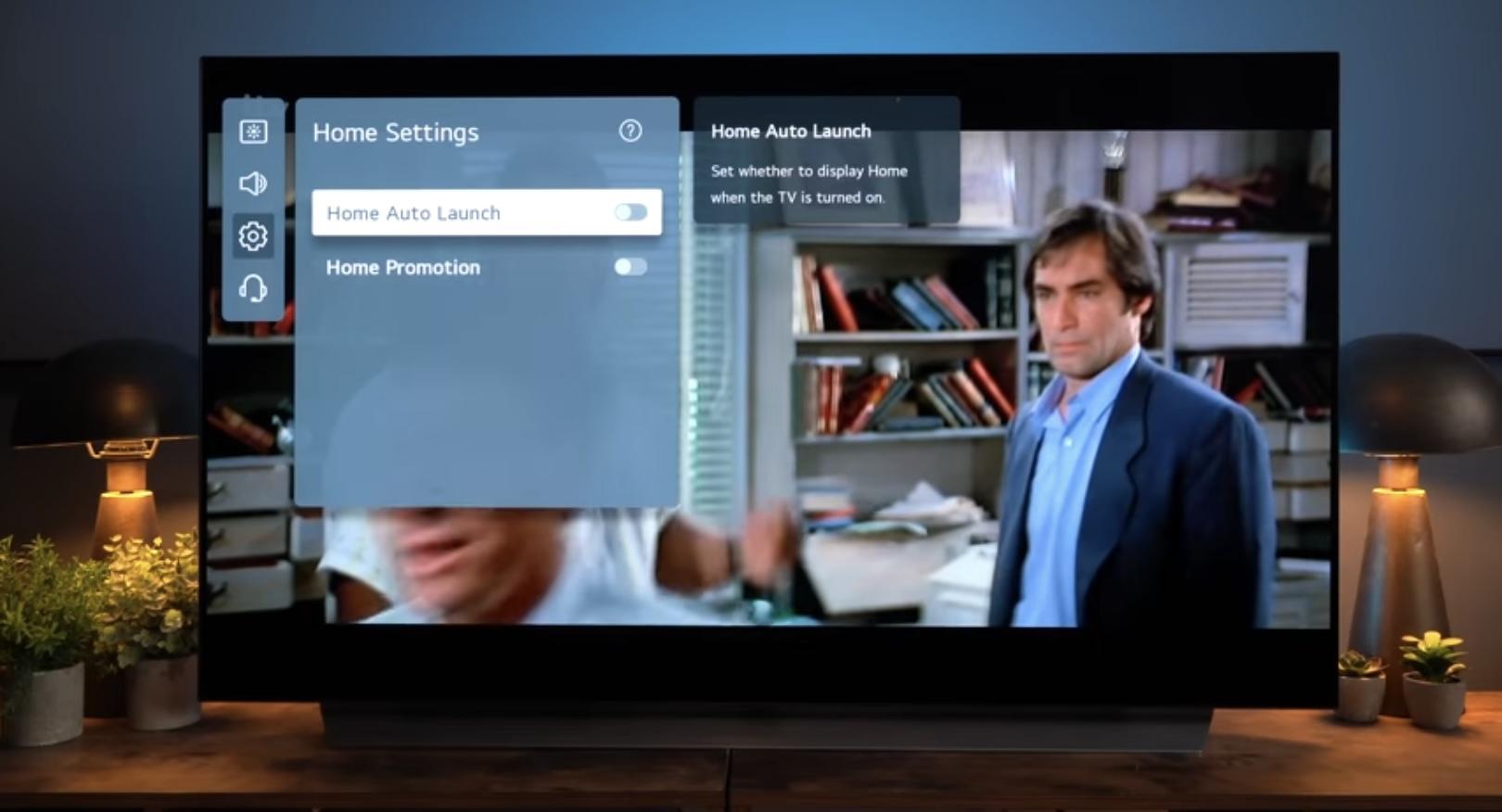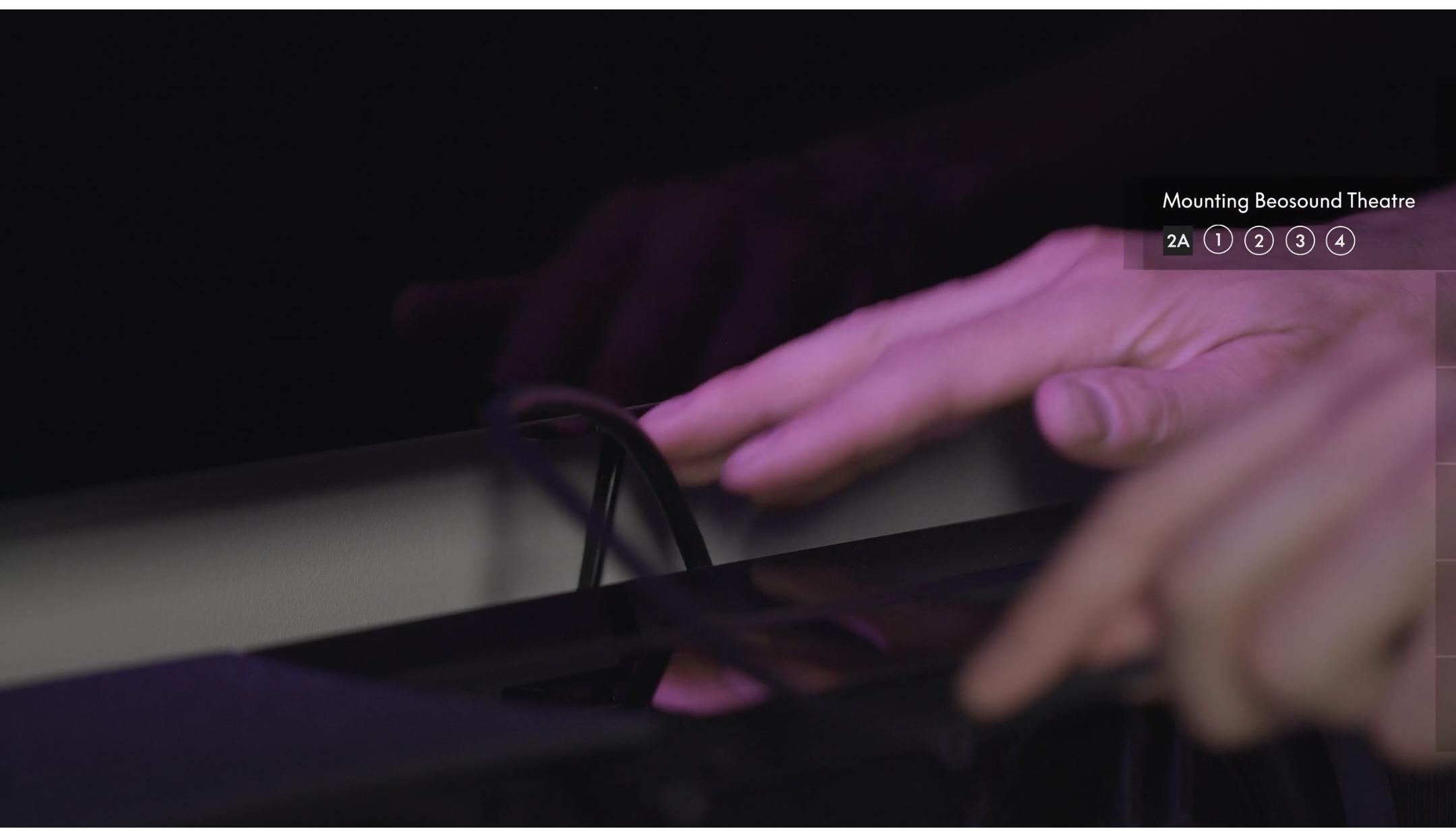- This topic has 1,327 replies, 110 voices, and was last updated 8 months, 3 weeks ago by
BeoMedia.
- AuthorPosts
- 20 December 2022 at 07:00 #37864
ok im THRILLED someone posted the tip on how to get rid of the LG logo on shutdown for the G2.
Can anyone figure out how to get rid of the notifications the TV gives you about sports and app updates? I get 4 popup notices every time the TV turns on and its annoying.
20 December 2022 at 07:04 #37865You don’t want to be reminded that “Life is Good” every time you turn off the TV? -Just kidding
20 December 2022 at 07:23 #37866Blunt instrument method: Configure your router to block its internet access without blocking its local network access. No news = no pop-ups. Unless, like the Google microphone-off announcement, it pops up messages telling you it can’t contact the mothership? [Edit: Ah, and of course you must be using an AppleTV or similar to get streaming content so it doesn’t matter that your LG Apps don’t connect.]
20 December 2022 at 08:26 #37867ok im THRILLED someone posted the tip on how to get rid of the LG logo on shutdown for the G2. Can anyone figure out how to get rid of the notifications the TV gives you about sports and app updates? I get 4 popup notices every time the TV turns on and its annoying.
—————

Maybe this helps (go to 9.00 ->)
MM
20 December 2022 at 08:38 #37868oh boy I want to avoid doing that as its a mess and I want the TV to get software updates.
Something else I don’t know if it is a bug or not… I have the theatre connected to the LG by the special ethernet TV port. The B&O app on the TV says it’s connected fine and using any internet services on the TV also works fine. The weird thing is in network setting on the LG it says ethernet is disconnected (and wifi is set to off). Anyone else have this?
20 December 2022 at 08:42 #37869Maybe this helps (go to 9.00 ->)
MM
Sadly that’s not it. Thats for Home Screen ads. The annoying ones are the “notifications”. I can go and view and delete them all but new ones keep popping up on boot.
20 December 2022 at 09:52 #37870my Theatres are being installed in 3 weeks time, both wall mounted. The installers have a lot of wiring going into the back of my living room theatre – lord knows how they’ll make the whole thing perfectly flush to the wall! Gaps will not be tolerated! Congrats by the way, and enjoy.
—————
Will be interesting to see how good they will get it.
The pic (from the install video) shows some, but not much space behind the wallmounted Theatre.

My own tablestand (with the SMI) mounted combo standing on a lowboard is pushed as far as goes against the wall…….not much space there either.
And no way to get the rear cover in place.MM
20 December 2022 at 10:05 #37871oh boy I want to avoid doing that as its a mess and I want the TV to get software updates. Something else I don’t know if it is a bug or not… I have the theatre connected to the LG by the special ethernet TV port. The B&O app on the TV says it’s connected fine and using any internet services on the TV also works fine. The weird thing is in network setting on the LG it says ethernet is disconnected (and wifi is set to off). Anyone else have this?
I have not looked in the LG, but when I go in to the LG app it shows my LG refrigerator and gives all of it’s information but says the G2 is disconnected.
20 December 2022 at 10:13 #37872oh boy I want to avoid doing that as its a mess and I want the TV to get software updates. Something else I don’t know if it is a bug or not… I have the theatre connected to the LG by the special ethernet TV port. The B&O app on the TV says it’s connected fine and using any internet services on the TV also works fine. The weird thing is in network setting on the LG it says ethernet is disconnected (and wifi is set to off). Anyone else have this?
—————
I won’t be able to say much about that (and the notifications), since my goal is to see as little of the LG/WebOS as possible.
I use (as previously with my Avant 1st gen) the ATV4K box, a (UHD/SACD) Bluray player, a Chromecast Ultra dongle, all connected to the Theatre/HDMI…..and from the LG occationally the build-in tuner.
How well that will succeeed, I won’t be able to tell until after a few more days of use (did not quite finish the install yet).Those, who want to use the apps on the LG will have a hard time to get rid of all unwanted stuff, I guess ☹️
P.S. The tv – of course – is connected with the ethernet cable from the Theatre……..I want the tv updates, too – and the control of the LG/UI, if needed.
So far no issues with network notifications like you described.MM
20 December 2022 at 10:19 #37873My LG TV added my LG washer and dryer. It would actually be useful to see notifications of washer and dryer cycles finishing. However, I haven’t been able to figure out how to do that.
20 December 2022 at 10:26 #37874Checked the settings on the G2…..there it does show connected to internet by Ethernet.
20 December 2022 at 10:28 #37848Purchased some 18s as a rear set of speakers to go with my theatre. Happy Christmas to me 🙂
20 December 2022 at 10:39 #37849During Room Sense I hear the BL6000 loud and clear. They are in “free” setting. The distances are correct but they are very quiet compared to the Theatre itself and on lower volumes I hardly hear them at all. But maybe that is correct.
I think this is normal operation. The surrounds are for ambience and weak speakers like the 6000’s wont get a look-in over the Theatre. One operation you can experiment with is the Advance Settings in sound Modes:-
The Fader setting can be used to re-direct input signals to different output channels in your loudspeaker configuration. For example, setting the Fader all the way to the left on the display will result in signals being directed only to the speakers in your configuration that have a Speaker Role in the rear (i.e. Left Surround, Right Back etc.) Note that, if you do not have a surround configuration of loudspeakers (i.e. if you have only a Front Left and Front Right loudspeaker in your current Speaker Group) then the Fader B/F setting will not operate correctly and should be set to the middle position (the factory default setting).
The attached document – though not specific for the Theatre may help. Especially around fader and surround settings.
However, I think as you change these settings, you may end up with an experience which is no longer as optimal for the equipment you have in the system.
20 December 2022 at 11:17 #37875Also, note that we can now assign the “Center” role to the Theatre’s Front and Left Front-Firing speakers. I’m interested to compare the difference with these added speakers.
Wait, how you do this? I have the beta app and the latest firmware and it still won’t let me do that.
20 December 2022 at 11:21 #37876Also, note that we can now assign the “Center” role to the Theatre’s Front and Left Front-Firing speakers. I’m interested to compare the difference with these added speakers.
Wait, how you do this? I have the beta app and the latest firmware and it still won’t let me do that.
You must follow Razlaw’s instructions. You first create a listening position and save it. Then, you go back into that listening position, select the three dots in the upper right corner of the screen, and select “Advanced.” Then, you can go into the speaker settings and assign the role to the front-firing speakers. The public B&O iOS app update just came out this morning to allow me to do this.
21 December 2022 at 01:41 #37877indeed, and I’ve looked that video many times to get some idea.
The one difference in my situation is that the wiring will pop out from a hole in the wall – and effectively emerge behind the Theatre, So as long as we get the hole positioned correctly, the Theatre should be able to be pushed back flush to the wall.
Some precision required – but I’ve got the a-team on the case (or so I trust!).
21 December 2022 at 02:10 #37887Is there a place where I can find what value to assign to a Beolab 2 connected via Receiver 1 for the Redirection Level?I could find this out once I get back to work after the holidays – but in order to calculate this, I/you would need to know all of the loudspeakers in the Listening Position, and their individual Speaker Roles. Send me a DM over Beoworld in the first week of January.21 December 2022 at 03:46 #37888Thank you, Geoff.
When you explain things, it really helps me understand. I’m beginning to see that maybe I had gotten too hung up on the 7.1.4 (or maybe it’s 7.3.4 now according to the new role options for subwoofers?) limitation of True Image upmixing. I had become so fascinated by the speaker placement guides on the Dolby Atmos site that I was thinking how great it would be to take advantage of True Image to extend my setup to 9.1.4 or even 11.1.6. Perhaps MORE speakers might not always be BETTER — such as in a setup where I was thinking of adding BL6000 speakers for the Wide roles when those speakers would not be able to perform as well as the 4 BL9 and 2 BL1 speakers they would be competing with.
21 December 2022 at 04:35 #37889Your comments make me wonder about my plan to add a pair of 4000s to the Theatre/28s/1s. As you say, perhaps more is not always better.
21 December 2022 at 04:47 #37890The most optimal situation is to be able to hear the mix as the mixing engineer heard it. However, this is not possible in many/most situations.
I originally designed the upmixing portion of the True Image processor with a rather simple aim:
- If you are sitting in the correct location (commonly called the “sweet spot” – although this is misleading) with a correctly-configured system, then upmixing with True Image should not change your perception of the mix, so it is redundant – or at least unnecessary.
- If you are NOT sitting in the correct location, then upmixing with True Image should help to deliver a perceived mix (primarily the spatial attributes) that is more like what you would hear in the correct location.
Note that the downmixing portion of True Image has a different purpose – but that’s not what we’re talking about. Note as well that this was my aim – real-world results may vary with different loudspeaker configurations, listening rooms, and mixes.
For example: If you play Suzanne Vega (or listen to the lead vocal in any pop tune) over a correct 2.0 stereo configuration, but you sit slightly to the right of centre, then you’ll hear the vocals on the right. If you upmix that track to a correctly-configured 5-channel output, then you’re more likely to hear the vocals in the centre loudspeaker.
The Dolby Atmos decoder in Beosound Theatre (just like all other consumer-level Dolby Atmos-compatible devices that I know of…) can decode/render a maximum of 7.1.4 channels. It is typically safe to assume (but it is an assumption) that a Dolby Atmos-encoded signal was monitored in 7.1.4 when they made the mix.* Note that this does not necessarily mean that the mix actually uses all of those channels. Some mixing engineers choose to omit some channels (by sending silence on them) for technical or artistic reasons.
Based on that assumption, it is also safe to assume that, if the mix was in 7.1.4, then upmixing it with additional output channels is unnecessary, since the reason to make any surround mix is to make the perceived spatial attributes in the mix more similar over a wider listening area. (For example, if you have one chair and no friends and a good 2.0 channel stereo system, you have no need of a centre loudspeaker because phantom imaging works very well…)
Finally, to come back to your earlier comment (maybe “complaint”? 🙂 ):
The Speaker Role options that were originally available in Beovision 11 -> Harmony were based on a master set of multichannel formats that never actually happened in consumer-level distribution. For example, in the early days of 7.1-channel signals, DTS had 7 different variants of layouts. Sony’s SDDS system supported 5 channels across the front and only 2 surround channels. Since the Speaker Roles had to be ready to support all of those channels in all possible then-future formats, the True Image upmixer was made to deliver them when they were not present at the input. For example, if you chose to build an SDDS configuration instead of a now-normal 7.x configuration, then True Image had to be compatible with that choice, and therefore it would create outputs appropriately. Since these format configurations never actually materialised in distribution media, there is no real need to continue supporting them with upmixing just for upmixing’s sake. As you said: more isn’t necessarily better – sometimes it’s just more.It’s important as well to separate the x.1.z vs. x.2.z vs. x.3.z difference from this, since that is a separate issue that is handled by bass management, not up/down-mixing.
* This may not be necessarily true for big-budget movies, since Atmos-compatible cinema systems can support up to 24.1.10 channels, which might actually be present in a large-scale re-recording theatre.
- AuthorPosts
- You must be logged in to reply to this topic.





